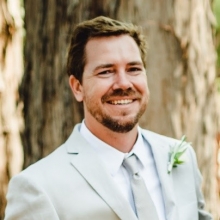MSE Seminar: Surface Chemistry-Dependent Luminescent Nanoparticles for Environmental Sensing

Department of Chemical Engineering
Lousiana State University, Baton Rouge, LA
Abstract: Rare earth elements play a significant role in the global economy due to unique luminescent, catalytic and magnetic properties resulting from their f electrons. However, there has been a push to replace these materials with earth-abundant counterparts to limit the U.S. reliance on foreign countries. Transition metal elements have the potential to replace rare earths but are severely limited by their unpredictable nature, which stems from crystal-dependent orbital hybridization. Typically, high pressures and voltages are required to overcome crystal-dependent hybridization for transition metal-based films but have limited long-term stability due to irreversible damage to the materials. These irreversible changes can be mitigated at reduced dimensionality (<20 nm) by utilizing spatially controlled structural defects/dopants and polarized surface chemistries. Our work explores how transition metal dopants can be spatially incorporated into nanostructures to control their resultant optical properties and how these properties can be tuned in real time. This presentation will explore the effect of weak dipoles on Ni-doped nanostructures to elucidate the changes on the optoelectronic properties of the host and dopants. Additionally, I will present our work in designing optical nanoparticles to sense biological molecules and reactions for real-time detection, for applications ranging from cancer screening to the monitoring of harmful toxins off of Louisiana’s coastline.
Bio: James Dorman is an assistant professor in chemical engineering at Louisiana State University. Prior to joining LSU, Dorman was an Alexander von Humboldt research fellow at Konstanz University in Germany, where he worked on optimization of next-generation solar cells by charge separation and transport across hybrid interfaces. He received his Ph.D. from UCLA in 2012, where he worked on white light LEDs with Jane Chang; he earned his B.S. from UCSD.
Share
Upcoming Events
-
MSE 298 Seminar: ML-Driven Ab Initio Enhanced Sampling: from Catalytic Reactions to Quantum Defect Formation
-
CEE Seminar: Wildfire Engineering: Integrating Models with Data to Provide Active- and Pre-Fire Solutions
-
CEE Fall Mixer 2024
-
MSE 298 Seminar: Additive Manufacturing as a Unique Platform for Fabrication of (Meta-)Materials with Complex Topologies and Designer Microstructures
-
MSE 298 Seminar: Extreme Environment Materials Enabling Propulsion and Power Generation: The Design and Durability of Materials Systems for Turbine Engines
